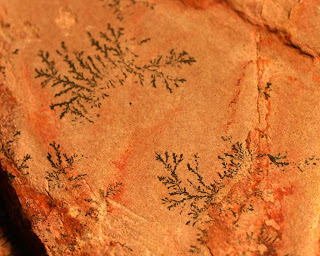Everyone that has taken a chemistry class has some exposure to the periodic table. Probably every science classroom has it hanging on the wall. The book
The Disappearing Spoon by
Sam Kean tells stories of how elements on the periodic table were discovered and people that helped provide the information in those elemental squares.
The title of the book refers a practical joke that chemists sometimes play. While serving hot tea to guests, the spoons used for stirring would be composed of gallium. Gallium is a solid while at room temperature that looks like aluminum. Once the material heats to over 80 degrees Fahrenheit it turns to a liquid. Watch this great video showing this trick.
Even though this book pertains more to chemistry, science history, and physics there is a tie in to paleontology. In the section of the book talking about pathological sciences. The author describes these sciences as "a marginal and unlikely phenomenon" which scientific principles and practices are used to prove its existence (e.g. spiritualism in the 1800s, cold fusion)
On pages 260-263 the author writes of the branch of paleontology that tries to reconstruct extinct creatures. The chemical relationship is the ship
HMS Challenger in 1873 doing marine research recovered conical and spherical manganese pieces from the deep sea floor. When some of these nodules were cracked open, they revealed megalodon shark teeth. The pathological part of the science emerges when people started to study the manganese plaque on the teeth. The build up should show 1.5 million years of accumulation but some teeth only had 11,000 years worth. Ideas circulated that like the coelacanth, the megalodons escaped extinction. It appears though the teeth with thin manganese layers were probably covered for long periods of time and then exposed recently.
One of stories I found eye opening was that of aluminum refinement (international spelling: aluminium). The metal in pure form was once as valuable as gold. As the book informs, the United States in 1884 as a show of its rising world power, capped the Washington Monument with a 6 pound pyramid of aluminum. Today along American roads, one can find discarded aluminum beer and soft drink cans. Amazing that once such a valuable metal is now trash on the side of the road! What changed, scientists figured out that electricity would separate the element into its pure form. With aluminum the most abundant metal on the earth's surface... the price became very cheap. It makes one wonder if space agencies would concentrate on asteroid mining, our planet would be awash in cheaper rare and common metals.
Another fact learned in the book was the contribution to the periodic table the locality of Ytterby, Sweden has made. The mines there accounted for the discovery of seven new elements (ytterbium, yttrium, terbium, erbium, holmium, thulium, gadolinium). Also from reading the book is the migration of chemical research from France and Germany to the United States which now might be migrating to Asian countries.
 |
Dmitry Ivanovich Mendeleev circa 1885
"father of modern periodic table"
The State Tretyakov Gallery, Moscow
|
There are sad stories as well about the toll research took on some of the scientists. Marie Curie and her daughter Irene Joliot-Curie dying of leukemia from their work with radioactivity. Enrico Fermi suffered from exposure to beryllium. How harmful some elements can be to the population and environment. The author's revelations about the harmful effects of cadmium at the Japanese Kamioka mines. Also how this incident tied to the Godzilla movies later produced in the country. Another tale of doom on how nitrogen gas can kill as NASA found out with the shuttle program.
Another fascinating story is that of the remains of an ancient natural fission reactor found in Oklo, Africa. Too many insightful and interesting tales to cover in this 391 page book to review here. Go to
Sam Kean's web site to learn more about it and how you can obtain a copy to read!
I enjoyed reading the book. The
Louisville Public Library has a number of copies, even so I was put on a waiting list back in August 2010 which put 27 people in front of me to read it. Finally a copy became available right before Christmas. So I read it pretty quickly so it could get back in circulation because there were 28 people still waiting to read the book.
One recommendation is going to Theodore Gray's
Periodic Table website while reading
The Disappearing Spoon. Mr. Gray's pictures of all the elements and their practical uses makes great reading and helped me visualize the material with the element names as they were mentioned in the book.
Periodic Table
Public Domain Image













































